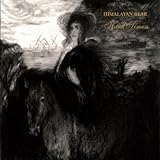 This is the last record released by Absolutely kosher. That probably doesn’t mean much to most of you, but it’s sort of sad and devastating, and it doesn’t make me feel any better to report that it was released 9 months ago, and I just heard the news this week.
This is the last record released by Absolutely kosher. That probably doesn’t mean much to most of you, but it’s sort of sad and devastating, and it doesn’t make me feel any better to report that it was released 9 months ago, and I just heard the news this week.
I started playing the guitar in High School, but my first band formed a little before that, while I was a student at Campbell Middle School. I don’t even remember everyone who was nominally in it. None of us played instruments, we just sort of threw for them. Initially, I was going to be the drummer, but my parents said no instantly, and my mother helpfully suggested I learn to play the guitar instead. I went back to school and we reshuffled instruments, and now I was going to play rhythm guitar. Then the school year ended and so did the band. Maybe we never even picked a name.
Over the summer before high school, jesus christ that was 18 years ago now, the only member of that initial band I stayed in touch with did start to take guitar lessons, and on some summer afternoon, he started to show me what he had learned. It was a sort of composite arrangement of two different guitar parts for the Collective Soul song “Shine”. (I’ll play it for you some time).
A year later I got a guitar of my very own, and not long after that we made up a whole band for ourselves, called The Lagomorphs, written with a pound sign, £agomorphs, and while we never managed to get a rhythm section together, it was the most important part of my adolescence. I learned to write html to maintain out angelfire (and later geocities) page, and if not for that, I wouldn’t be a software engineer now. I picked up most of the bands I listened to from my bandmate Rick, who deejayed at the most prominent local college radio station, and of course, I learned to play the guitar. Nearly all the skill I have on the instrument came from those first frantic two years, and then when college came I decided that I’d had enough of the silly songs about godzilla we were playing, and I quit the band. I had a brief and terrible period of songwriting (that coincided with my brief and terrible period of short fiction writing), and then basically stopped playing music at all.
But around the time I was giving up music altogether, Rick and his new girlfriend had started to record some songs, and as part of that project, shopped them around a little, including to Absolutely Kosher. They drove down to Berkeley to give them the demo, and came home with an album called The Meadowlands by a band called The Wrens, and my God, what a thing that was.
After that, or really, after a few cd samplers came in the mail, I was off to the races. Many of my favorite releases of the 2000’s came out on the Absolutely Kosher imprint. I have one and only one playlist on my phone and ipod. It’s called Good Stuff and probably one song in five is from an AK record (mostly Jim Yoshii Pile Up and Bottom of the Hudson). There was a year when I bought everything they released. When they merged with Misra I discovered Palomar. They released a Mountain Goats record. They were the best thing going.
And this record, Hard Times by Himalayan Bear (Ryan Beattie, also of AK band Frog Eyes), is the last. The label is scaling back from new music to managing the catalog, and even though I had drifted away in the last couple of years (as podcasts took over for music in my daily listening), it’s a terrible feeling.
The record is good, by the way. It’s evocative and melancholy, the arrangements are interesting and the sound is unique. Worth checking out if you don’t need your music upbeat and dancy.
Goodbye, Absolutely Kosher.




